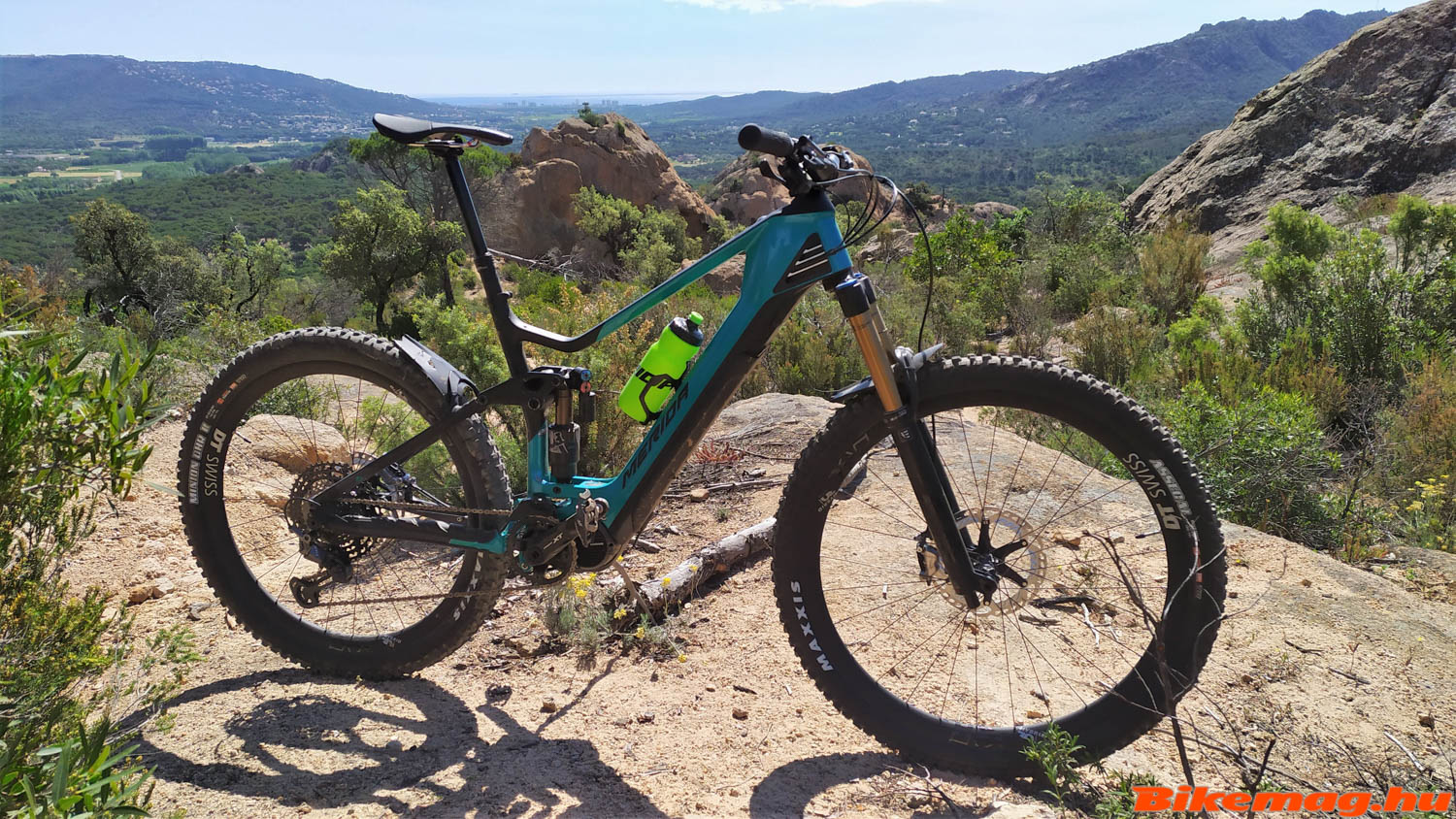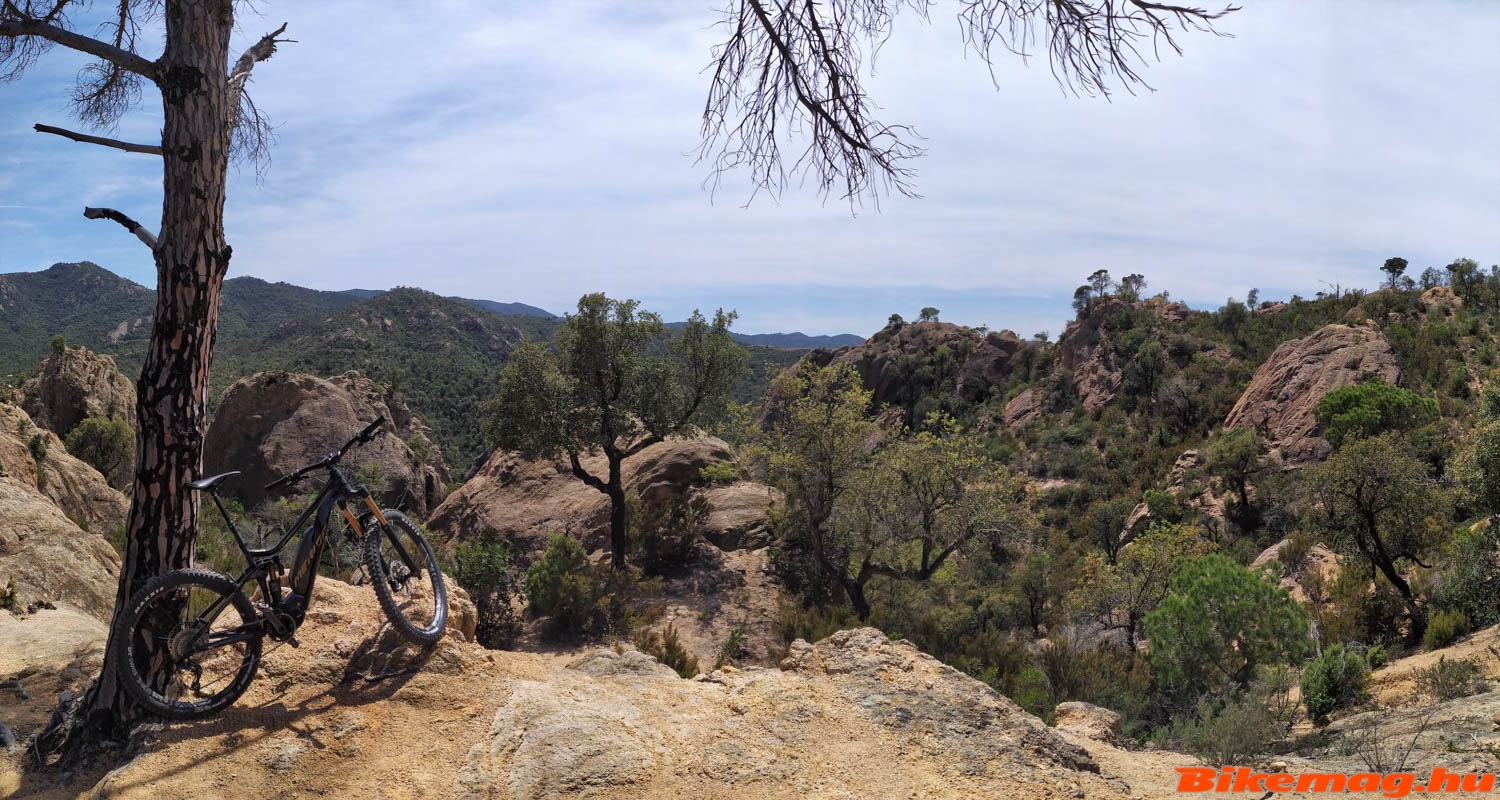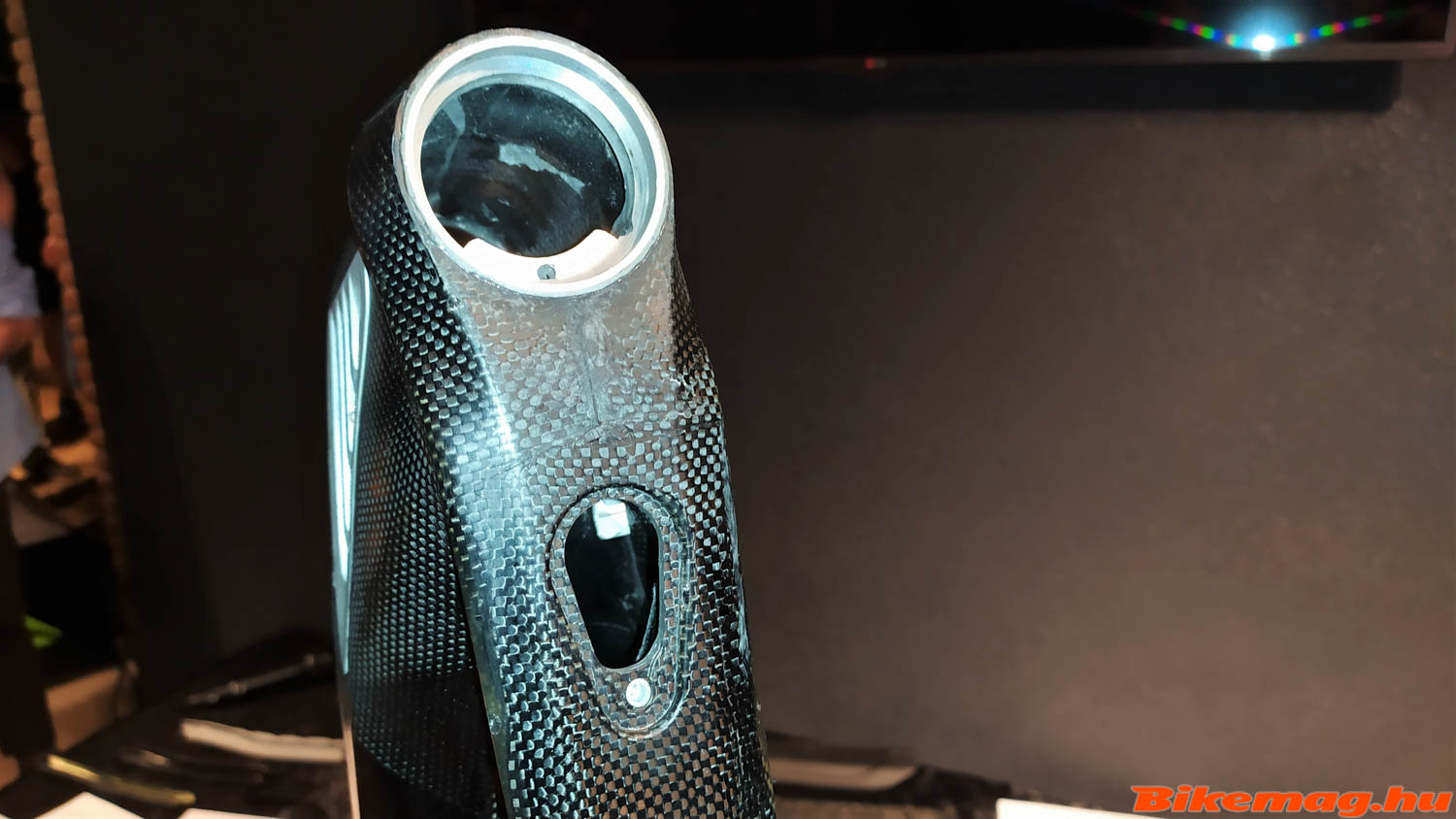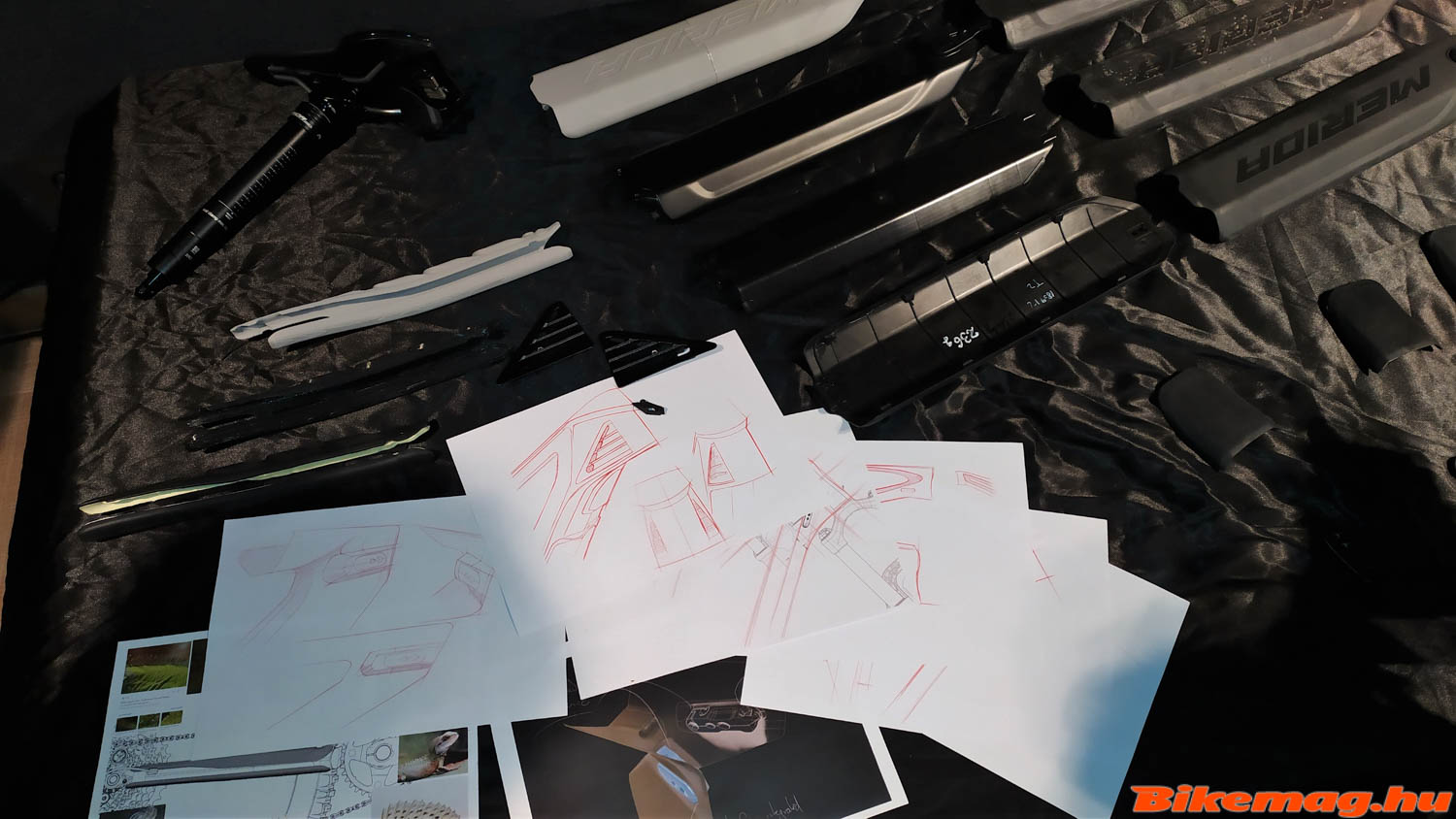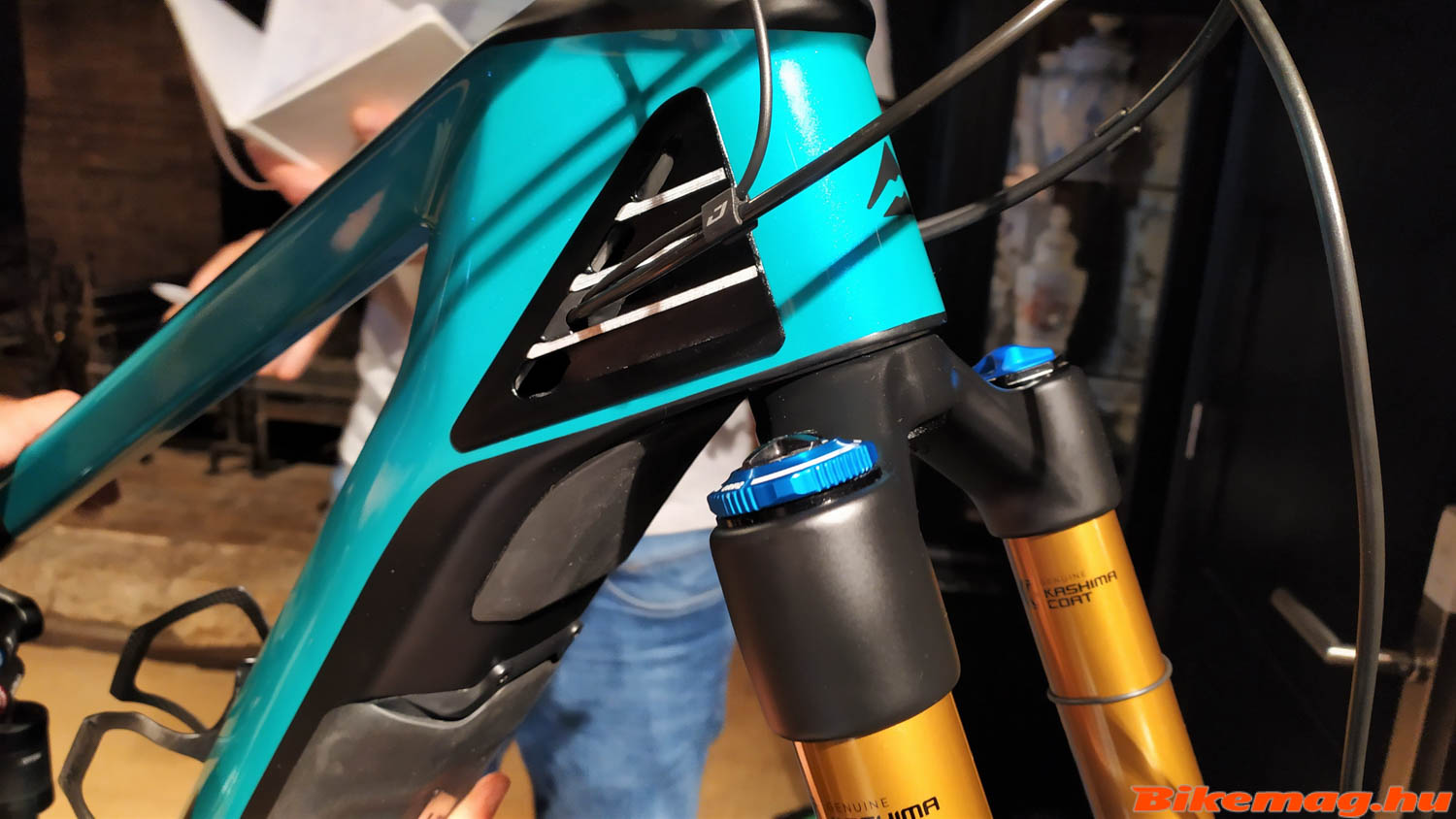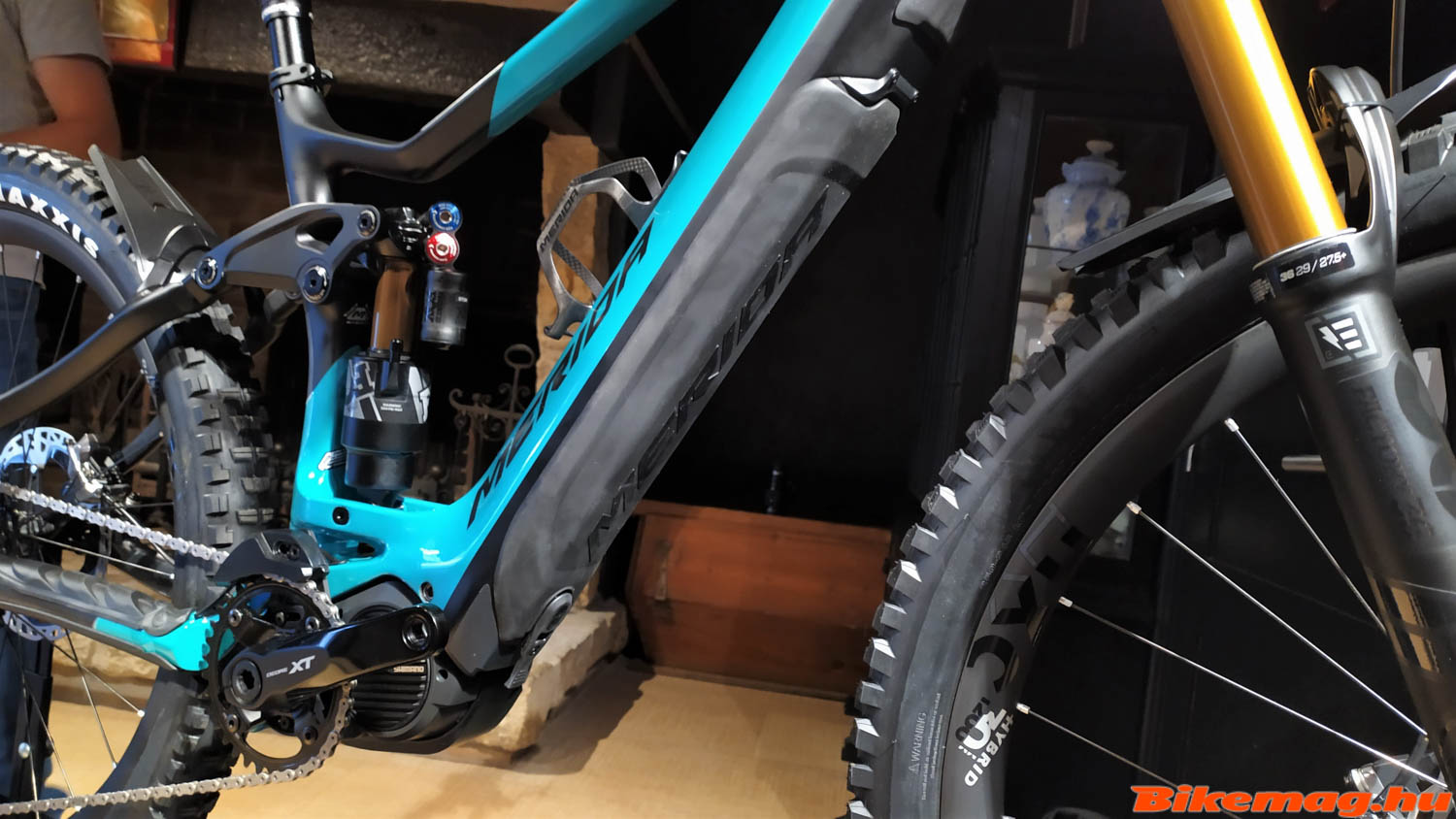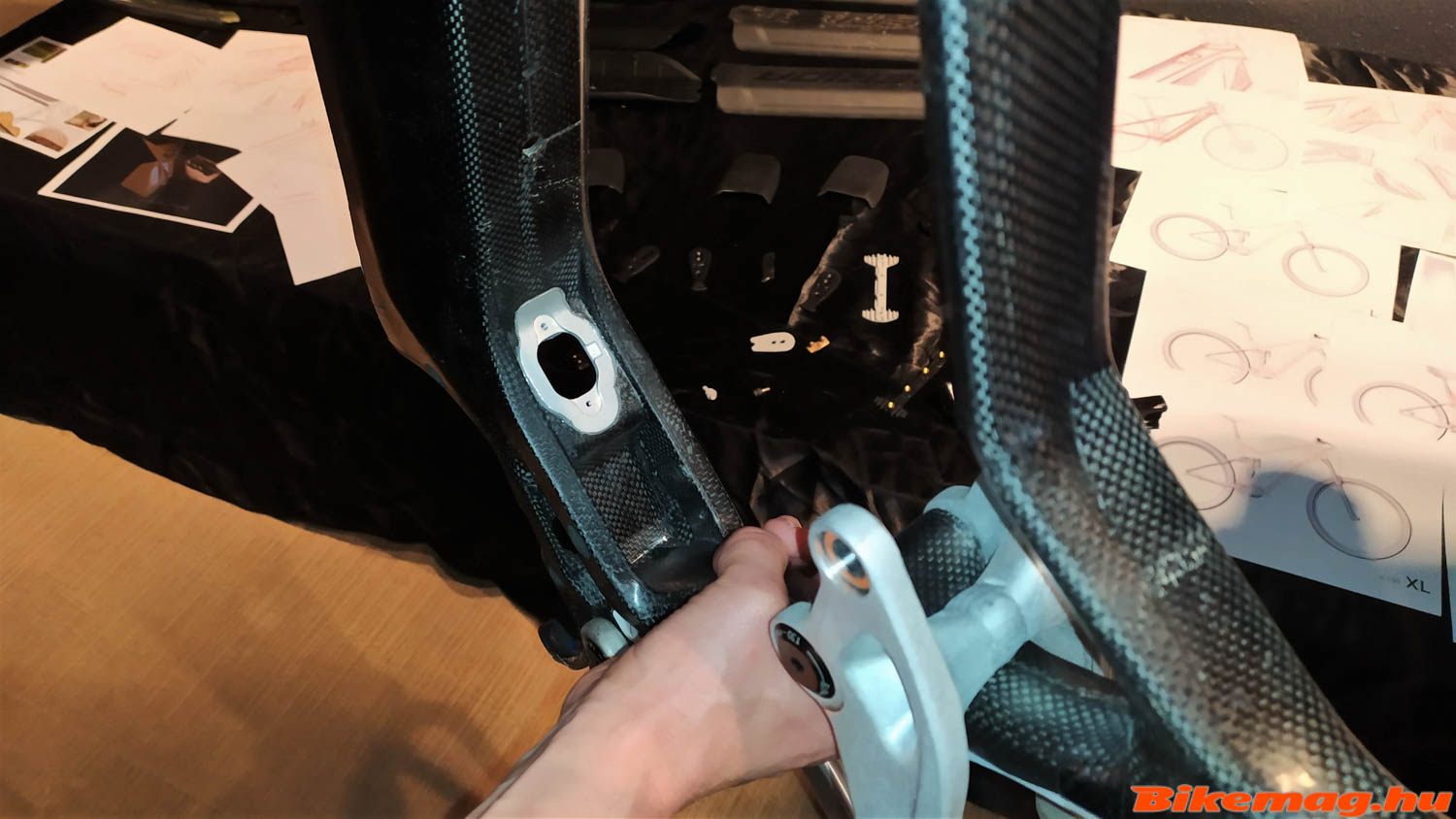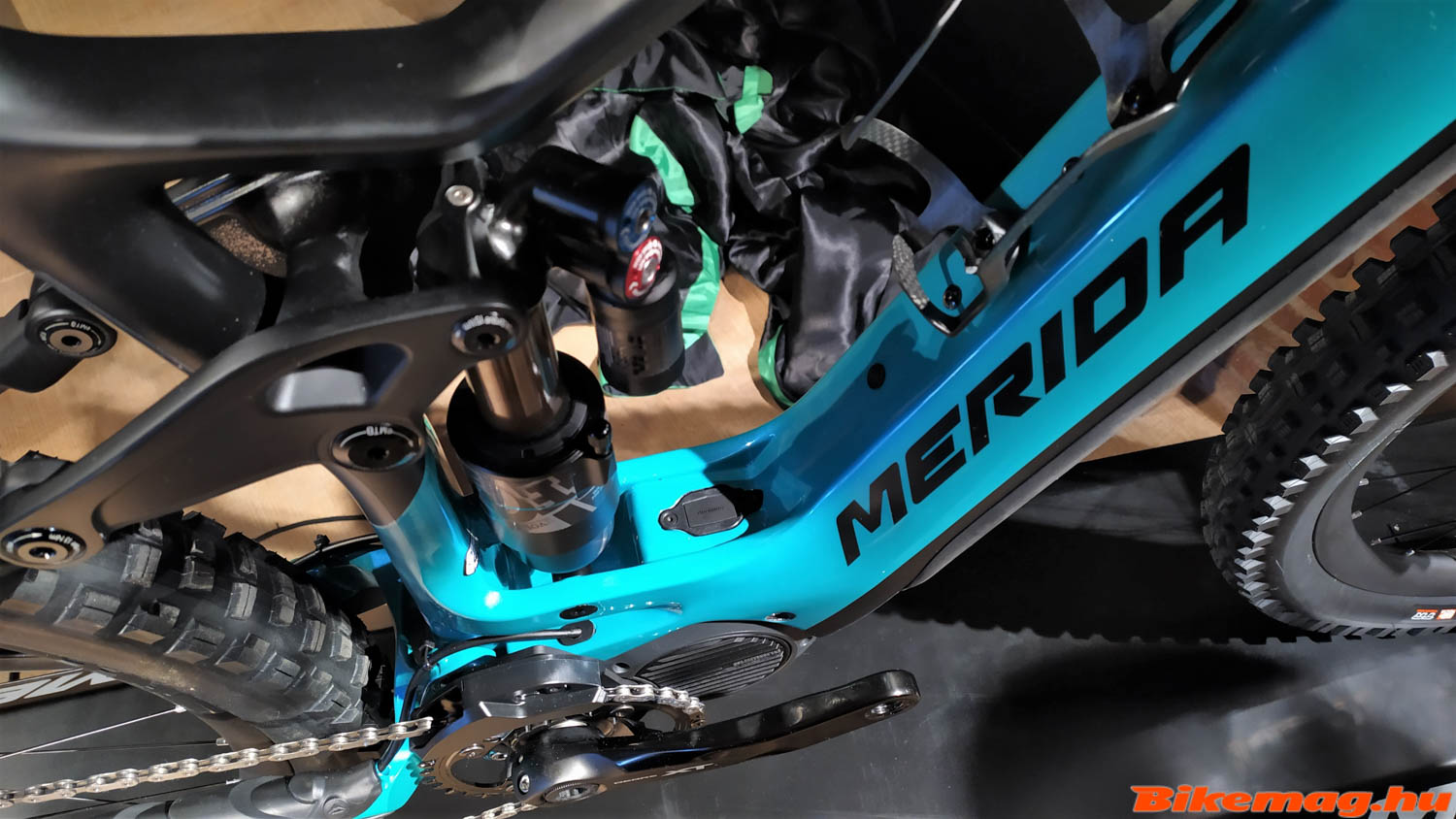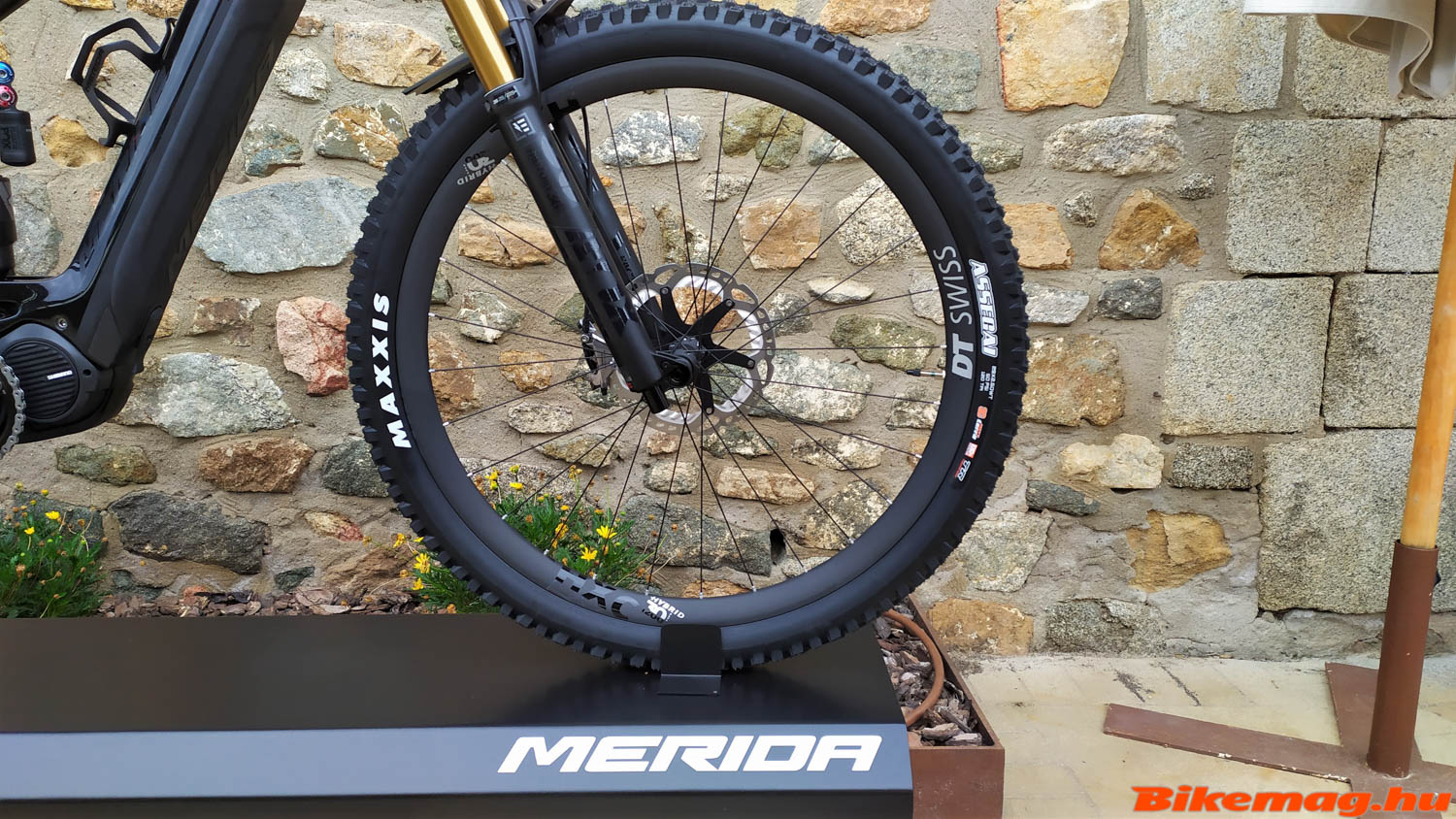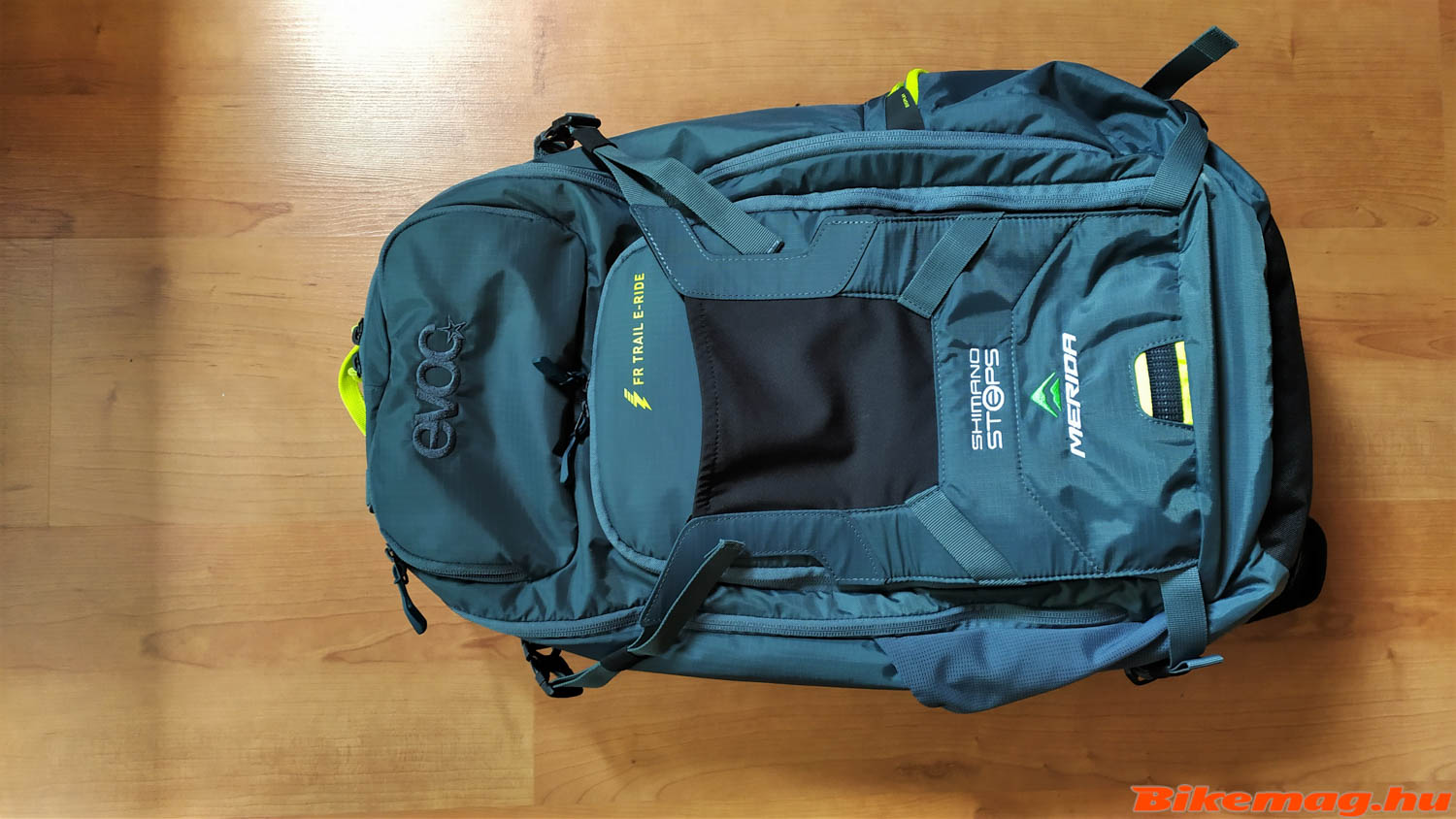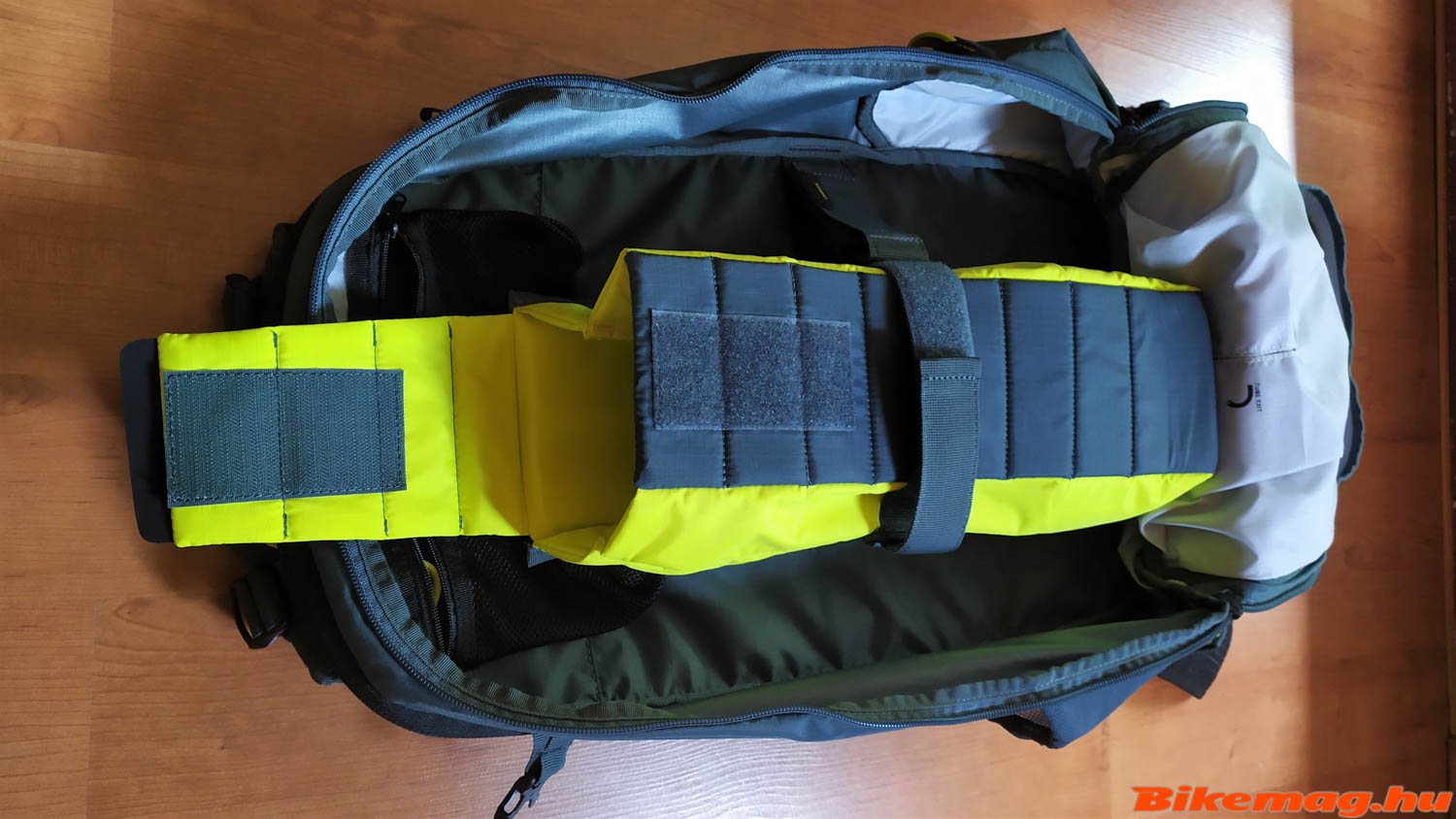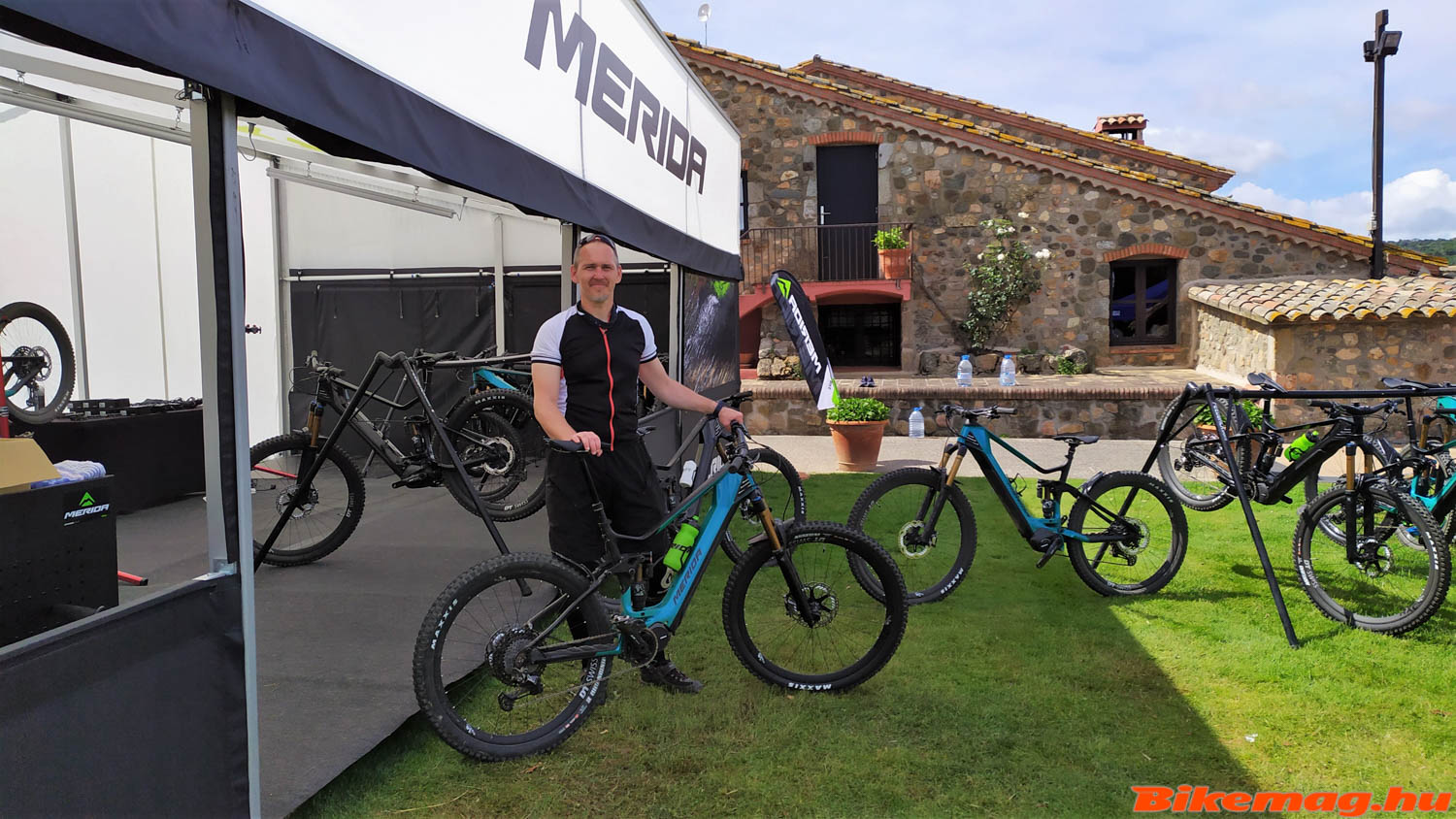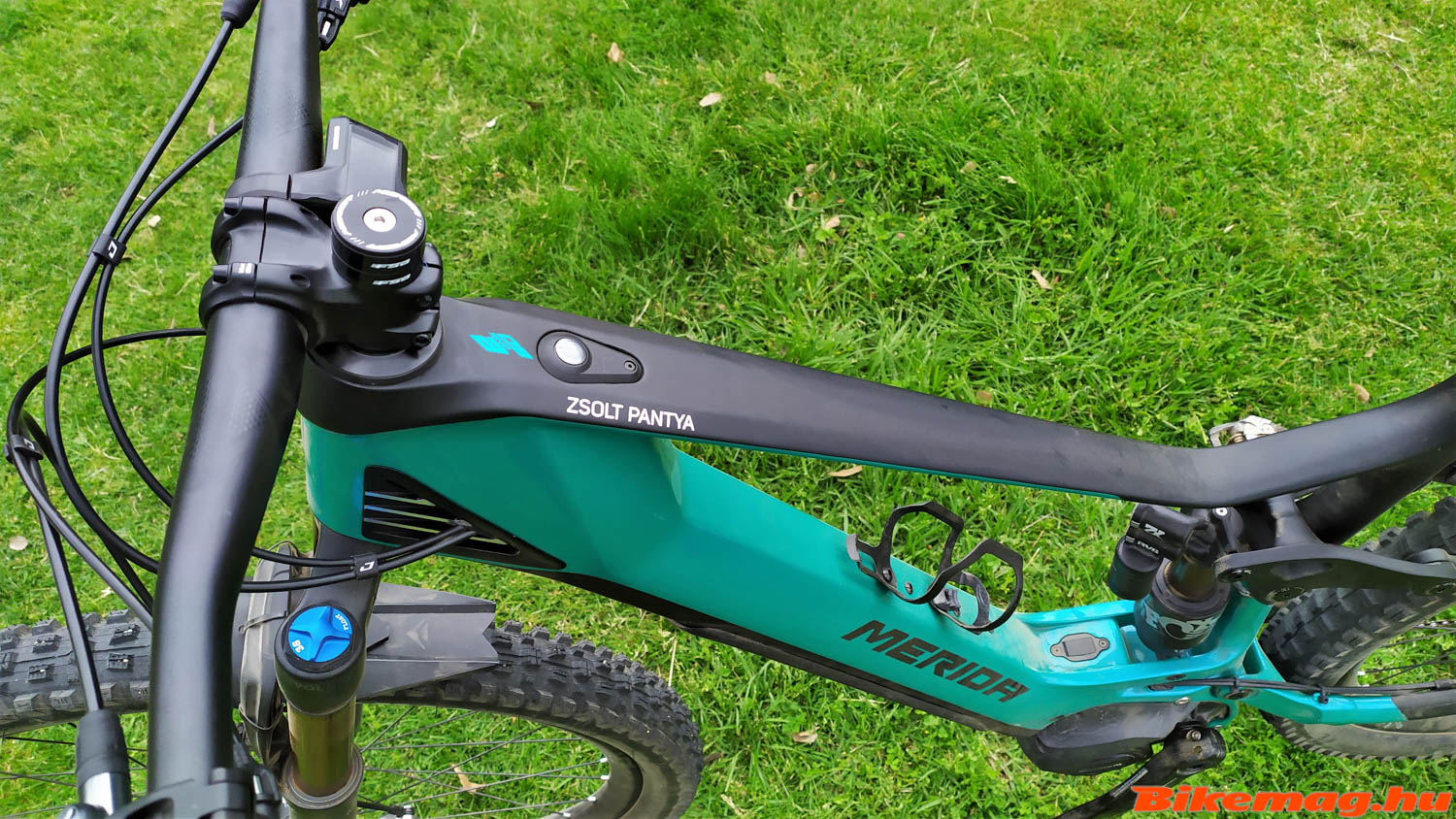I’m sitting at the airport in Barcelona waiting for my plane to take off, and the film keeps playing in my head. It shows all the fantastic experiences some hours before aboard a Merida eOne-Sixty, like flying up a steep gully at 20 km/h. That was a trail that man could barely walk on, and there I was climbing it on two wheels with relative ease. How can I relate this incredible experience to anybody? Well, this write-up tells the story of how I fell completely in love with eMTB riding.
It all began when I arrived a little too early at the Merida test camp. I was told to take one of the currently available bikes from the fleet, the staff thought it would be a great way for me to get acquainted with the trails in the area. The course used for the bike launch event was 10km long with 400m of vertical elevation: that’s should be fine for a morning spin – I thought. This pre-ride would also serve as a comparison between the older and the newer generation of eOne-Sixty. So be it!
The Finnish colleague was also an early bird, so we set out together riding one complete lap. Well it took us one hour and five minutes. Actually we weren’t going that slow, as we got lost once, took some pictures of the stunning scenery. Riding an eMTB was a new experience for both of us, so we had to get the hang of the new technology. Let’s say the actual riding time was three quarters of an hour.
The previous eOne-Sixty – which is presently available in the shops – has won many comparative tests in the international cycling media and won numerous fans among the cyclists. We might think Merida would be right to sit on its laurels, but that’s not how the fast changing market of electrically assisted bikes work. Merida had to prove that it can top the feat with another bell ringer. Hence we have a revamped eOne-Sixty which will soon be hitting the market.
The product launch in Spain saw unveiling of the new eOne-Sixty 10k. This will be the flagship model in the Merida eMTB range, and Jurgen Falke and the rest of the team talked extensively about the conception, the development process, the technical aspects and the final effectuation of this newcomer.
The motto of the presentation was “True Legacy X Reinvented”. This aptly describes the process how the Merida design team went from the first steps to reach the final production version. This model embraces everything we come to expect from mountain bikes, covering all aspects of riding, especially MTB enduro. The bikes has a revised head tube angle, gets the new Shimano battery pack, the front triangle is a new carbon design while the rear end is made from hydroformed aluminum alloy. The frame integrates many of the bike’s components, resulting in a much more slender appearance, similar to that of a conventional MTB rig. And we shouldn’t forget to mention the lowly bottle cage – something I’ll dwell into later in this narrative.
Let’s start the list of The R&D features with the frame itself! The frame development is actually a joint collaboration between Merida and Shimano. The Japanese giant had the task of designing an interchangeable battery pack module that was more slender and compact, then Merida took the next step by designing a frame that could accommodate the new component. In my humble opinion the shape of the frame is stunning!
Since the frame had to take an elaborate shape to embrace the battery pack, the design team chose carbon fiber as the base material. This offers the greatest flexibility for design while maintaining low weight and a high degree of stiffness. The 1.5” tapered head tube has an aluminum insert called Internal Block to prevent the fork accidently hitting the straight down tube which houses the battery. Protection of this tube section is enhanced by applying a massive rubber coating where a hit might take place.
Another spectacular technical aspect of the head tube area is the so-called Thermo Gate, which serves as a cooling vent to control battery temperature. Since a carbon fiber structure is a poor heat conductor, the excess temperature has to be drawn away from the battery to prevent overheating. High temperature may be instigated by both internal and external factors – but whatever the cause, it has be controlled. The system has a safety safeguard measure which shuts down the operation of the bike if motor temperature exceeds 60 degrees Celsius.
Contrary to other models on market, the removable battery pack exits the frame in a downward direction. So the top part of the tube section is the structural element, and inside there is a reinforced core. Apart from its structural role, the down tube’s special construction also provides IPX5 water resistance for the battery back.
One of the main objectives was to create a very quiet bike. Less noise the better, the constant susurrus from the electric motor should be the only sound the rider experiences. The thick rubber protective coating on the battery cuts noise made by debris hitting the tube from the ground. The encasement of the battery slides on a rail until it’s held in place by a locking mechanism. Manual closure is carried out by a heavy duty rubber handle found on the bottom of the tube. Replacing the battery is achieved by a three-step process. First of all, the rear wheel axle integrates a tool which could be used to unlock the battery container. This ingenious gizmo offers 4 and 6 mm allen keys: the former is used for removing the battery, fixing the seat post clamp and the stem bolts. Last but not least it is also employed for activating the wake-up mode – done by inserting the allen key into a socked near the bottle cage in order to wake up the system after a long hiatus.
Inside the huge cavity that houses the battery pack we can find another quite clever solution. The designers created a rail made of hard industrial grade plastic, which fixes all the cables for a completely rattle-free ride experience. This structural railing also incorporates the 4 eyelets used to attach the water bottle. This enables the rider to choose between two the cage positions for convenience and practicality. M/L/XL size frames do not strictly require the two positions as the conventional 0.7l bottle easily fits inside the frame. On the other hand, size space is limited for the smaller frame, so normally only a 0.5l bottle can be fitted. But there is a “loophole”, the possibility to purchase the eOne-Sixty with a smaller rear shock, thereby freeing up some space inside the frame. In that case the bottle cage could be shifted down into the other mounting position allowing for a larger bottle to be used. Ingenious!
Why am I talking so much about the humble water bottle when dealing with a bike featuring so much technology and electronic engineering? During the post presentation dinner, I sat next to one of the development engineers. I asked him what was the greatest challenge the team faced, and he picked the water bottle mount. He spoke for at least a half an hour about the challenges of coming up with the above-mentioned system. He pointed out, that the absence of a bottle mount was the most cited complaint from cyclists and shops concerning the older model. It became such an acute problem, that the Merida engineering team was specifically given the task of remedying this deficiency. (By the way, the previous model couldn’t incorporate the bottle cage due to the horizontal position of its rear shock.) All this fuss about the bottle is not a joke, not even when the eOne-Sixty is primarily intended for MTB enduro riding!
Moving onto some more serious topics: the frame geometry of the new model has also been tweaked, it went longer, slacker and lower. The head tube angle was slackened to 66.5 degrees, the chain stay length was drawn out to 439.5 mm, and the seat tube made a degree steeper to 75.5. In order to enhance stability, the bottom bracket shell sits lower than previously, and to compensate for the drop, the bike is equipped with 165mm crank arms instead of the usual 175mm. The longer wheelbase also serves to boost stability, which is now at whopping 1212mm (for the size medium). The top tube benefits from the longer frame geometry, offering a very spacious cockpit. The geometry chart below tells the whole story.
The specifications of the eOne-Sixty 10k will be the following:
- New BT-E8035 Shimano battery (504WH)
- Shimano motor E8000
- Shimano E7000 control buttons to set the drive modes
- Shimano XTR 12s shifting
- Shimano XTR 4-piston hydraulic brake system with 203/203mm rotors
- Fox 36 Factory E-bike version 160mm travel front fork
- Fox Factory Float X2 shock for 150mm travel rear suspension
- DT Swiss XRC 1200 e-Bike specific carbon wheelset (29″ front/27.5″ rear Boost standard)
- Front Maxxis Assegai 3C Exo+ 29×2.5, rear Maxxis DHR2 27.5×2.6” tires
- Merida Expert TR dropper seat post with the new Shimano SL-MT800 lever, up to 170mm travel
- Shimano satellite on/off switch
- Shimano satellite charging port
- 30.9mm seat post diameter
- 1.5″ headtube (headset › 1 1/8″ – 1.5″) designed for normal tapered forks
- 205x65mm trunnion mount shock rear shock
- Post mount 180mm brake caliper is inside the rear triangle
As the reader can see from the description, the new bike has different front and rear wheel size! The 29” wheel in front lowers rolling resistance, allowing the bike to more easily move over obstacles, the 27,5” back wheel offers increased strength, lowers weight and improves handling.
For the test ride I used a size L which weighted 22.8kg including pedals. The carbon wheelset found in the 10k model version has a combined weight limit of 120kg, hence the rider has to weigh in just under 100kg. The lower specification models will come with an aluminum wheelset which extends the weight limit to 140kg (rider+bike combined).
As I have mentioned, we got to ride the 10k flagship version. It’s state of art in all respect, including the price tag which is an eye-watering 10,000 euro! Quality and exceptional engineering comes at a price, but in case the extra cost also includes an additional battery pack and a specially designed Merida backpack with spine protection made by EVOC. This is where the additional battery pack be stowed away while out on a ride, hence providing some extra range. As expected, the new bike will come with lower-level component spec as well: the lineup is said to include a 9000, 8000, 5000 model. These are expected to be much more affordable.
Out riding:
Those of us who arriving early for the product launch were given the opportunity to ride the present generation eOne-Sixty. For me it was a shocking experience. Having all the extra controls and displays on the handlebar I felt like a caveman, somebody has no idea how to ride an MTB trail. Having spent the last 28 years riding mountain bikes, I’m certainly no rookie, still getting familiar with both the Di2 and the assistance controls took me an entire ride. The E8000 levers remind me of the oldest generation of Shimano shifters where the control levers are positioned vertically next to each other. The power assist buttons have the same arrangement but the other way around. One changed to a higher gear or assistance with the smaller button, the other with the larger. Since there was not enough space under the bar, the lockout lever of the Rock Shox Reverb was mounted above, making flicking the lever awkward. I set out on this first ride with all this chaos, part of it in my head, the rest on the handlebar.
The trail was designed by none other than Merida’s main brand ambassador, José Antonio Hermida. He needs no introduction to BikeMag readers, now he proved that he is an excellent course designer. It had all the features of a proper XC race venue. Having finished the ride, the colleague from Finland and I both noted that hobby MTB riders would have a hard time completing the course in one go. There were just too many steep hard climbs and challenging technical descents. In the afternoon I decided to return to this illustrious track to give it another go aboard a bike I know quite well: the non-motorized Merida One-Twenty 8000. Let’s see what an average amateur rider can do on his own power! – I said to myself. The reward for my diligence was some hike-a-bike, and pushing in some uphill sections, but I still had tons of fun aboard this light full-suspension all-rounder.
Then I was convinced that the difficulties I experienced in the morning were not up to the machine, but the rider. This course demands excellent bike handling skills which I lack, and this was only made worse by my unfamiliarity with modern electronic bike components. It doesn’t matter if I had ridden 60-70 MTB bikes in my years, those were all “analogue”… the eOne-Sixty a completely different kettle of fish. Now I was most anxious to see what the next day would bring!
The morning opened with a meeting at the trail center where the Merida Team tents were set up. The new eOne-Sixty bikes were all waiting, each set up to our specifications (which we were asked to indicate the previous evening), and labeled with the rider’s name. We then were put into small groups, which were lead by one of the five tour guides. The groups left the camp at set intervals. Hence there was some time for me to familiarize with the new rig, riding it in the garden surrounding the bike center. I immediately realized that the new eOne-Sixty is quite different from the previous version. For one, the XTR shifters were familiar, and the E7000 motor controls were substituted to improve ergonomics. This allowed the front fork lever to be placed in the correct location, where it’s the most convenient to operate. Finally the direction of the control buttons were now matching for both assistance and shifting. The handling was day and night compared to my experience the previous day with Merida’s older eMTB. A 10-minute warm-up was enough for me to be familiar with the controls, needing no peek at the handlebar to use the desired function. By the way, the assist modes are the same for both bikes (Off, Eco, Trail and Boost), and they can be selected based on what the trail brings.
So we set out on the course which have ridden twice the previous day, but I could finally fully concentrate on the trail that lay ahead. This 10km circuit has everything to test a bike: a dry stream bed full of rocks and deep ruts, sudden 20% inclines, bushes, trees burned by lightening, very tight switchbacks, wall-rides and so on. Riding uphill was at a whopping 10-18km/h, while descending was dictated by how skillful or brave the rider was. Truly fast downhills were few and far between since the trails were quite technical. You could hear the fellow journalists’ exultation on most sections, and I was screaming and shouting as well! What an adrenalin rush, oh, it was so much fun! These bikes are awesome, allowing us mortals to ride the best trails ever. When we stopped for a rest, everybody was urging the guide to continue the ride!
What sounded promising during the presentation, turned out to be much-much better. The steep seat tube angle truly places the rider in an ideal position for climbing, negating any negative effect of the slacker head tube and longer wheel base. The bike was easy to maneuver in the rock garden. Uphill the power assistance proved to be invaluable, allowing non-professional athletes to tackle technically challenging steep climbs. In this scenario I was switching between Eco and Trail modes, depending on how much assistance was needed and how much traction was available. Due to sudden power surges I sometimes I had to use the brakes while climbing. Though the motor was continuously on the go, the sound never seemed disturbing. Maybe I was concentrating so much on the technical aspects of the trail, being filled with adrenalin and joy, my hearing got completely shut off…
We were riding uphill at close to downhill tempo, reaching the summit in no time. Then came the tid-bit, the descent back to valley. Despite its relative heft and the long wheelbase, the eOne-Sixty offers excellent cornering, especially in tight turns. It has an excellent weight distribution, offering tons of stability for taking dusty steep singletrack with ease. It demands the rider to push the boundaries, both in terms of speed and maneuvering. The new Maxxis Assegai Exo+ 2,5” tires were made exactly for these circumstance, with plenty of grip, taking into account the demands of the eMTB riding. It provided the added confidence needed for this course, something that was clearly lacking the previous day with older version. For the back Merida chose the Minion DHR2 which is the benchmark for riding technical trails, especially in dusty, rocky conditions.
In my opinion the new Shimano XTR 4-piston brakes constitute the pinnacle of MTB brake technology: never has brake performance reached such heights. The bike the previous day had Saints which are no doubt excellent brakes, and offered plenty of power even on such a rather portly machine. There were occasions when the brake bite was so sudden that I had the jitters while riding on the unfamiliar ground. The new XTR retained the power of the Saint while providing such fine modulation that I have never experienced with any brake systems. This fine balance makes the difference, giving the rider extra confidence when tackling hard technical descents.
The XTR shifting performed admirably as usual, but I noticed more noise during the shifts on this eMTB than on convention mountain bikes. Previously XT gear components had this crisp crackling sound, now the noise seem to have surfaced again. It’s difficult to pinpoint the cause, but some fine tuning in the shifting may solve this issue. On the other hand I have nothing but admiration for the FOX suspension components on the test bike, they provided an impeccable performance even in the most adverse rocky conditions. The frame has a pronounced stability and the suspension does not compromise this character. The wheel size difference proved to be a hit as well with the front behaving as expected, rolling swiftly over everything it encounters. This only adds to the rider’s confidence.
I believe the Merida engineers have achieved their objectives concerning noise reduction. There is not a single rattle from the cabling, chain slap or any other clatter which might distract the rider from the awe-inspiring cycling experience. Chain noise is dealt with by utilizing a wavy-shaped rubber covering on the chain stay, a simple but effective method to keep the drive train quiet. When descending, I heard nothing other than the usual hollow thud and swish made by the tires.
Go full tear on the trail’s impossibly steep and technical climbs? Riding twice the distance than what you’d be capable of otherwise? We’ve made mountain bike heaven! Of course this comes at a price – literary speaking. At least for now until eMTBs become the norm, and the cost this such fantastic technology drops to a more attainable level. This is bound to happen as all previous technical inventions for bikes eventually trickled down to the entry price level. Sooner or later we’ll all enjoy the fruits of these engineering efforts: long live the Merida eOne-Sixty!
COMPARISON ‘OLD VS NEW’
• Integrated battery
• Carbon main triangle
• Mixed wheel sizes (front: 29×2.5, rear: 27.5×2.6″)
• Updated geometry (slacker head angle, lower bottom bracket, steeper seat angle)


